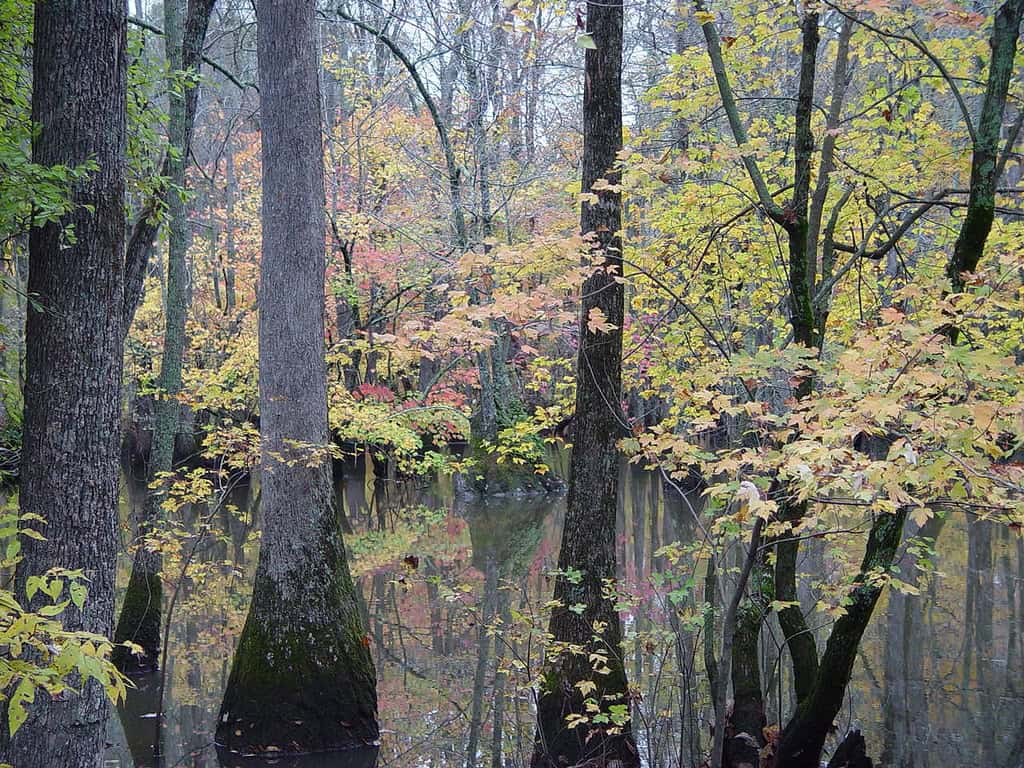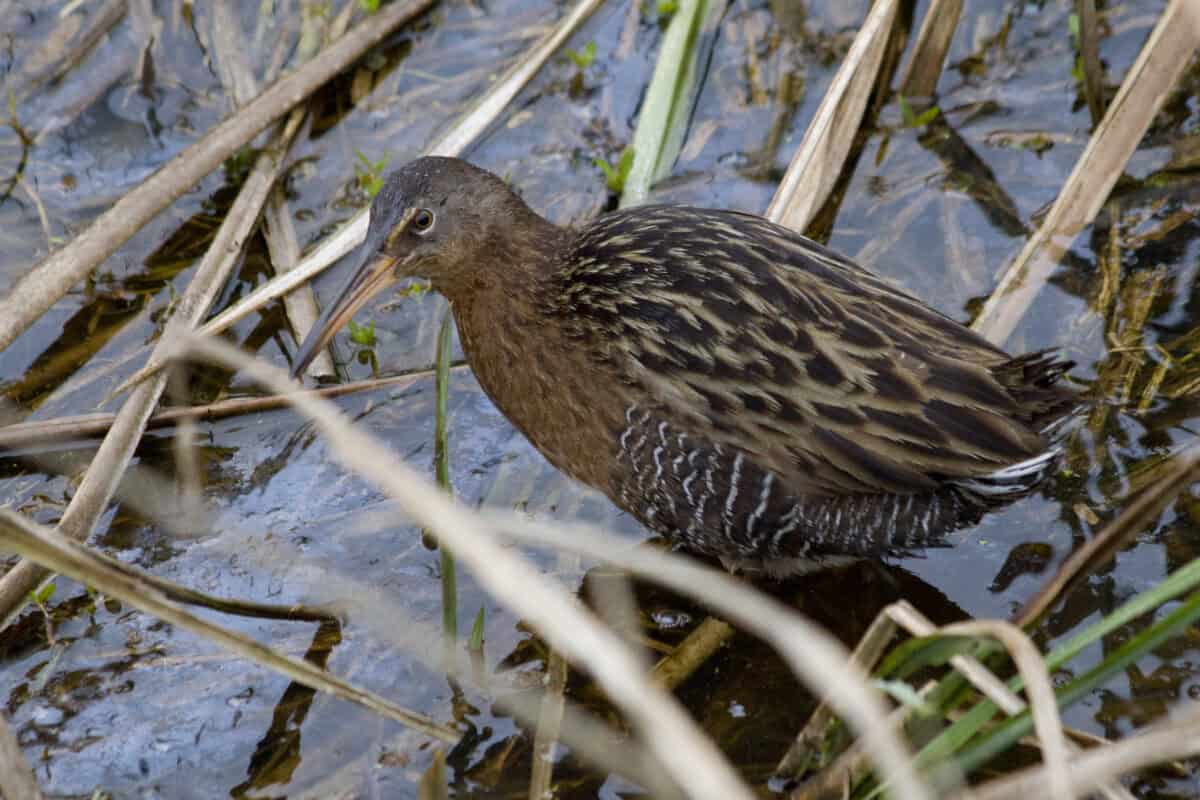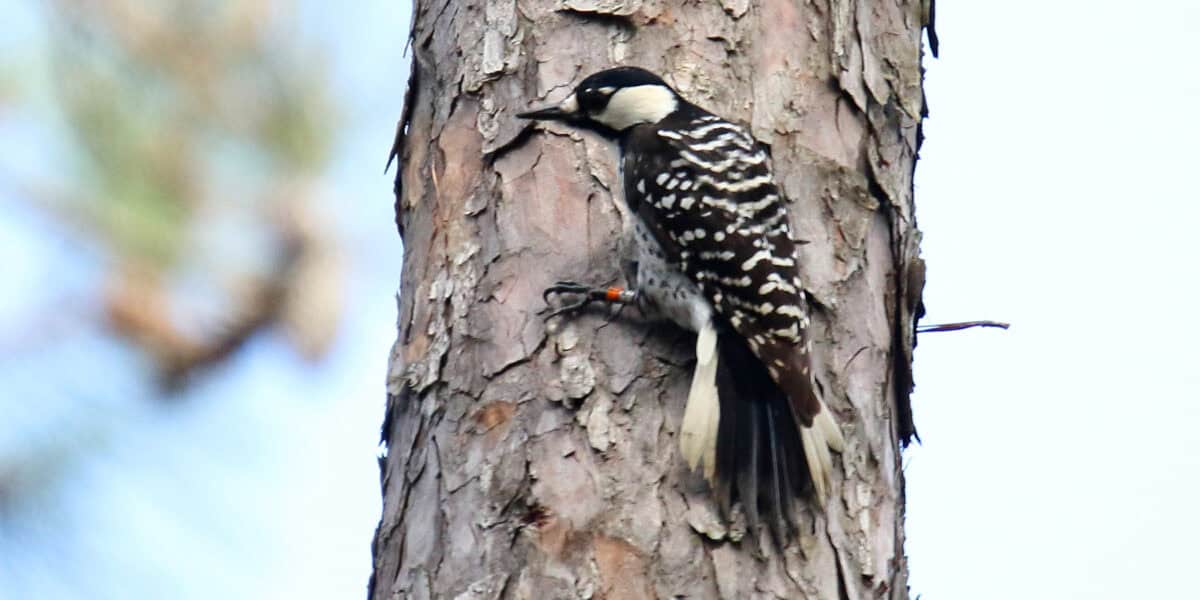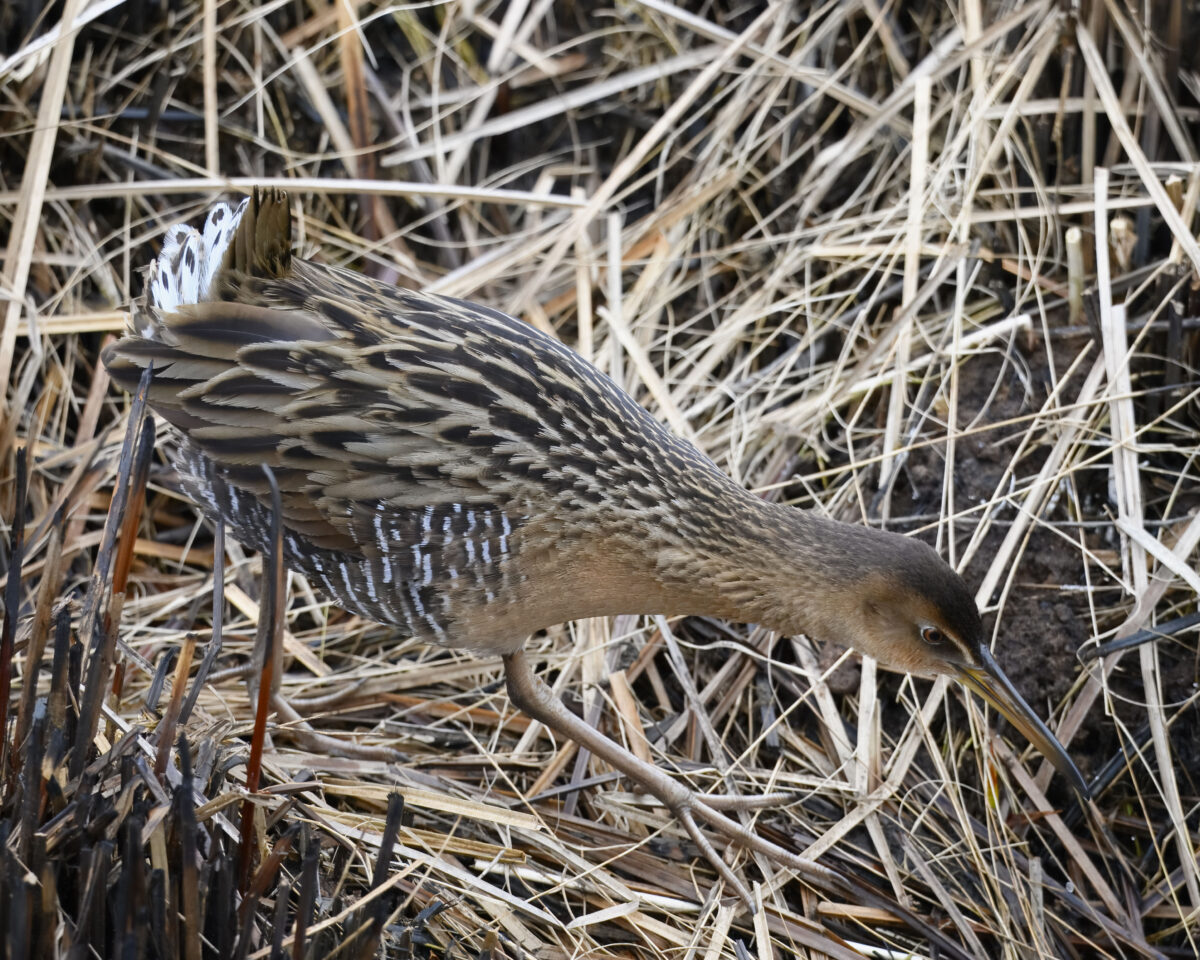Nestled away from the well-trodden tourist paths and tucked between mountains and valleys lies one of America’s best-kept conservation secrets: the Cache River National Wildlife Refuge in Arkansas. This remarkable sanctuary spans approximately 72,000 acres of bottomland hardwood forest and represents one of the most important remaining wetland ecosystems in North America. While it may not feature prominently in travel guides or social media feeds, this hidden forest has become a crucial sanctuary for numerous endangered and threatened bird species that rely on its unique habitat for survival. The refuge’s exceptional biodiversity, remote location, and dedicated conservation efforts have transformed it into a remarkable success story in the ongoing battle to protect America’s endangered avian wildlife.
The Ancient Forest That Time Forgot

The Cache River National Wildlife Refuge contains some of the oldest trees in the eastern United States, with bald cypress specimens dating back over a thousand years. These ancient trees, with their knobby “knees” protruding from the water and draped in Spanish moss, create an otherworldly landscape that feels untouched by modern civilization. The refuge encompasses the largest contiguous tract of bottomland hardwood forest remaining in North America, representing a mere 20% of what once covered millions of acres across the Mississippi Alluvial Valley. This forest type has been reduced drastically due to agricultural clearing and timber harvesting, making the Cache River refuge a rare window into America’s ecological past and a critical habitat island for countless species that depend on this forest type.
Home to the “Lord God Bird”

Perhaps the most famous endangered bird associated with the Cache River refuge is the Ivory-billed Woodpecker (Campephilus principalis), often referred to as the “Lord God Bird” because of the exclamation people would make upon seeing this magnificent creature. While officially listed as critically endangered and possibly extinct, the last credible U.S. sighting occurred in this very refuge in 2004, sparking international attention and renewed hope for the species’ survival. Standing nearly 20 inches tall with striking black and white plumage and a bold red crest (on males), this woodpecker requires vast stretches of undisturbed mature forest with abundant dead and dying trees. The Cache River’s old-growth sections provide exactly the habitat these elusive birds would need, and though confirmed sightings remain extraordinarily rare, the refuge continues to be monitored as one of the only places where rediscovery remains a possibility.
The Diminutive Interior Least Tern

In stark contrast to the imposing Ivory-billed Woodpecker, the Interior Least Tern (Sternula antillarum) represents one of the smallest endangered birds finding sanctuary within the Cache River ecosystem. This subspecies, weighing just 1-2 ounces with a wingspan of about 20 inches, nests on sandbars and gravel banks along rivers, including portions of the Cache River system. Since being listed as endangered in 1985, conservation efforts have helped populations begin to recover. The refuge’s protection of natural water flow patterns and river dynamics has preserved the bare sandbars these birds require for nesting, away from predators. During summer months, observers might spot these small white and gray birds with black-capped heads diving for small fish in the refuge’s waterways, a testament to the importance of protecting entire ecosystems rather than just forest habitats.
Wood Storks and Wetland Recovery

The Wood Stork (Mycteria americana), North America’s only native stork species, finds critical habitat within the Cache River refuge. Listed as threatened under the Endangered Species Act, these large wading birds with distinctive bare heads and thick, downturned bills depend on the refuge’s shallow wetlands for their specialized feeding technique. Wood Storks hunt by touch, walking through shallow water with their bills partially open, snapping shut with remarkable speed (as fast as 25 milliseconds) when they detect prey. The refuge’s careful water management practices maintain ideal feeding conditions for these birds, supporting colonies that represent the northernmost breeding populations of this species. Conservation efforts within the refuge have contributed significantly to the species’ gradual recovery from critically low numbers in the 1980s, demonstrating how targeted habitat protection can reverse declining trends for endangered birds.
The Elusive King Rail’s Stronghold

The King Rail (Rallus elegans) represents one of the most secretive endangered species finding sanctuary in the Cache River refuge. These chicken-sized marsh birds with long, slightly downturned bills and rich chestnut-colored plumage have experienced sharp population declines due to wetland drainage across North America. The refuge’s extensive emergent marshes, with their dense vegetation and stable water levels, provide ideal conditions for these rails to build their platform nests hidden among cattails and other marsh plants. Their presence is more often detected through their distinctive calls—a series of harsh “kik-kik-kik” notes followed by a grunting sound—than by actual sightings. Research conducted within the refuge has provided valuable insights into the habitat requirements of King Rails, helping inform conservation strategies for this declining species across its range.
A Crucial Stopover for Migratory Species

Beyond providing habitat for resident endangered birds, the Cache River National Wildlife Refuge serves as a critical stopover site for millions of migratory birds traveling along the Mississippi Flyway. This major north-south route sees more than 40% of North America’s waterfowl and shorebirds passing through during spring and fall migrations. Several endangered or threatened migratory species, including the Whooping Crane (Grus americana) and Piping Plover (Charadrius melodus), utilize the refuge’s resources during their long journeys. The refuge’s location along this aerial highway makes it particularly valuable as development has eliminated many traditional stopover sites. During peak migration seasons, the wetlands and forests fill with an astonishing diversity of birds resting and refueling before continuing their journeys, creating one of the continent’s most impressive wildlife spectacles that relatively few people witness due to the refuge’s remote location.
The Conservation Success of Bald Eagles

While no longer listed as endangered, the American Bald Eagle (Haliaeetus leucocephalus) represents one of the greatest conservation success stories associated with the Cache River refuge. These iconic raptors, with their distinctive white heads and tails contrasting against dark brown bodies, have established multiple nesting territories throughout the refuge, contributing to the species’ remarkable recovery from the brink of extinction. In the 1960s, bald eagle populations plummeted due to DDT poisoning, habitat loss, and hunting. The establishment and protection of critical habitats like the Cache River refuge, combined with the banning of DDT and targeted conservation measures, allowed these magnificent birds to rebound. Today, visitors to the refuge during winter months can sometimes observe dozens of eagles perched in the bare branches of tall cypress trees or soaring above the wetlands, a powerful testament to what conservation efforts can achieve when habitats are protected and restored.
Prothonotary Warblers: Canaries of the Forest

The brilliant golden Prothonotary Warbler (Protonotaria citrea) is not federally endangered but has experienced concerning population declines and serves as an indicator species for the health of bottomland hardwood forests. These “swamp canaries,” as they’re sometimes called, are one of the few warblers that nest in tree cavities over water, making the flooded forests of the Cache River refuge perfect breeding habitat. Their populations have declined by over 40% since the 1960s due to the loss of their specialized habitat. The refuge supports one of the densest breeding populations of these warblers anywhere in their range, with males establishing territories in early spring, their bright plumage flashing like gold coins among the green leaves as they sing their distinctive “sweet-sweet-sweet” song. Research conducted at Cache River has provided valuable insights into the nesting requirements and conservation needs of this declining species.
Red-cockaded Woodpeckers and Forest Management

The endangered Red-cockaded Woodpecker (Leuconotopicus borealis) represents a conservation challenge that the Cache River refuge has helped address through specialized forest management techniques. Unlike most woodpeckers, these birds excavate nest cavities exclusively in living pine trees, particularly longleaf pines affected by heart rot fungus. While primarily associated with pine forests rather than the bottomland hardwoods that dominate much of the refuge, the Cache River National Wildlife Refuge includes upland sections where pine forest restoration has created habitat for these rare woodpeckers. Conservation efforts include prescribed burns that mimic natural fire cycles, removal of midstory vegetation that would allow predators access to nests, and even the installation of artificial nest cavities to help populations establish in suitable habitat. The presence of these specialized woodpeckers demonstrates how the refuge’s diverse habitats support a wide range of endangered species with very different ecological requirements.
Threats and Ongoing Conservation Challenges

Despite its protected status, the Cache River National Wildlife Refuge faces numerous threats that endanger its avian inhabitants. Agricultural runoff from surrounding farmlands introduces pesticides, fertilizers, and sediments that can disrupt the delicate ecological balance of wetland systems. Climate change presents perhaps the most significant long-term threat, with shifting precipitation patterns affecting water levels and timing that birds have evolved to depend upon. Invasive species like feral hogs damage understory vegetation and can destroy ground nests, while non-native plants like kudzu and privet threaten to alter habitat structure. The refuge also contends with the challenges of being situated in a heavily modified landscape, where water control structures on surrounding lands affect natural hydrological cycles. Conservation managers employ adaptive strategies including water level manipulation, invasive species control, prescribed burning, and ongoing habitat restoration to address these challenges and maintain suitable conditions for endangered birds.
Citizen Science and Community Engagement

The protection of endangered birds within the Cache River refuge has been significantly enhanced through citizen science initiatives and community engagement. Local birdwatchers participate in annual Christmas Bird Counts and Breeding Bird Surveys that provide valuable data on population trends for rare species. The “Big Woods Birding Festival” draws visitors from across the country while raising awareness about conservation challenges and opportunities. Educational programs reach thousands of schoolchildren each year, cultivating the next generation of conservation advocates. Perhaps most importantly, partnerships with local landowners have extended conservation efforts beyond refuge boundaries, creating buffer zones and wildlife corridors that enhance the effectiveness of the protected area. These community connections have transformed the refuge from an isolated island of habitat into the centerpiece of a regional conservation network that benefits numerous endangered bird species.
A Model for Conservation and Recovery

The Cache River National Wildlife Refuge stands as a testament to what can be achieved when conservation priorities are backed by scientific management and community support. Established in 1986 and expanded over subsequent decades, the refuge has demonstrated how protecting and restoring critical habitat can reverse declining population trends for multiple endangered bird species. The success seen with species like the Bald Eagle and Wood Stork provides hope for birds still struggling on the brink of extinction. The refuge’s approach of managing for ecosystem health rather than single-species recovery recognizes the complex ecological relationships that support biodiversity. Each year brings new discoveries about the birds that call this hidden forest home, from previously unknown nesting behaviors to unexpected migration patterns. As climate change and development continue to threaten natural habitats nationwide, the lessons learned at Cache River will be increasingly valuable for conservation efforts elsewhere. This remarkable sanctuary, though still largely unknown to the general public, represents one of America’s most important living laboratories for endangered bird recovery and protection.
Conclusion

The Cache River National Wildlife Refuge represents a critical sanctuary for endangered birds that has emerged as one of America’s most significant yet least-known conservation success stories. Through dedicated management, scientific research, and community partnerships, this hidden forest continues to provide essential habitat for species that have disappeared from much of their historic range. The refuge’s importance extends far beyond its boundaries, serving as a genetic reservoir, migratory stopover, and living laboratory that informs conservation practices across North America. As we face unprecedented challenges to biodiversity in the coming decades, protected areas like the Cache River refuge will only grow in importance, standing as living proof that with proper protection and management, even the most endangered birds can find safe haven and hope for recovery in these special places that remain hidden in plain sight across the American landscape.
- How Wildlife Corridors Help Bears Migrate Safely - August 26, 2025
- How a Giant Sloth Once Roamed the US and Stood Over 10 Feet Tall - August 26, 2025
- A New Species of Cat Has Been Found in the Andes - August 26, 2025

